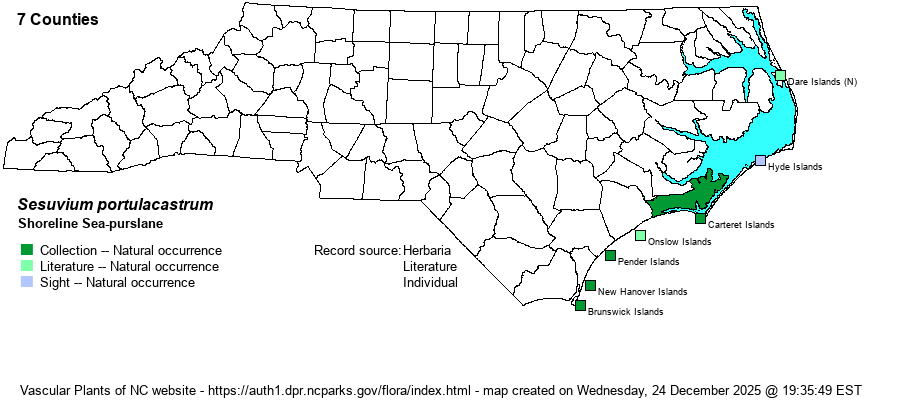| Author | (L.) L. | |
| Distribution | Strictly coastal, ranging north to the northern portion of coastal Dare County.
This species ranges from eastern NC south to southern FL and around the coast to southern TX.
| |
| Abundance | Generally rare along the coast, but somewhat ephemeral in occurrence from year to year, despite it being a perennial species. The State Rank is S1S2, and it is listed as State Endangered. | |
| Habitat | This is a species of sand flats, beaches, dune swales, edges and drawdowns of coastal ponds and impoundments, and other sunny and open coastal sites. |
| Phenology | Blooms from May to frost, and fruits shortly after flowering. | |
| Identification | This is a prostrate species, rooting at the nodes, and forming mats. The opposite leaves are fleshy, oblanceolate to spatulate, about 1-inch long and about 1/3-inch wide. The flowers are singly in leaf axils, with 5 bright pink triangular sepals, but no petals. The spread flower is about 1/3-inch across. This species is similar to S. maritimum, but that one, which grows in similar coastal habitats, has sessile flowers (as opposed to flowers on short stalks in S. portulacastrum), a somewhat erect to leaning stem, and the stem does not root at nodes (and thus does not form mats on sand or mud). S. maritimum usually has a white, or pale pink flower, not as richly colored as that of S. portulacastrum. That species also has 2-3 styles per flower, as opposed to 5 styles in S. portulacastrum. Take great care in separating these two, as each is scarce to rare in NC. | |
| Taxonomic Comments | None
| |
| Other Common Name(s) | Large Sea-purslane | |
| State Rank | S1S2 | |
| Global Rank | G5 | |
| State Status | E | |
| US Status | | |
| USACE-agcp | FACW link |
| USACE-emp | FACW link |

